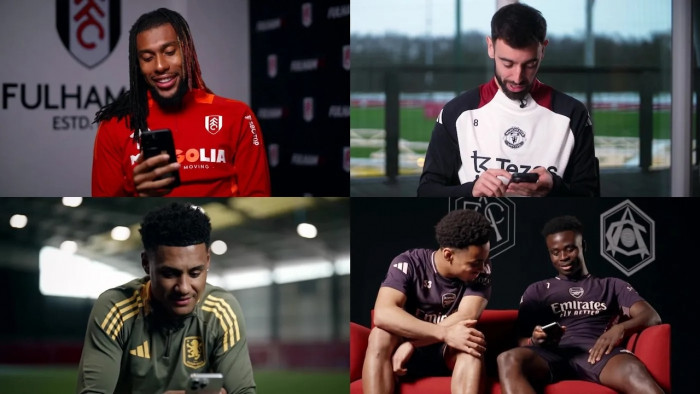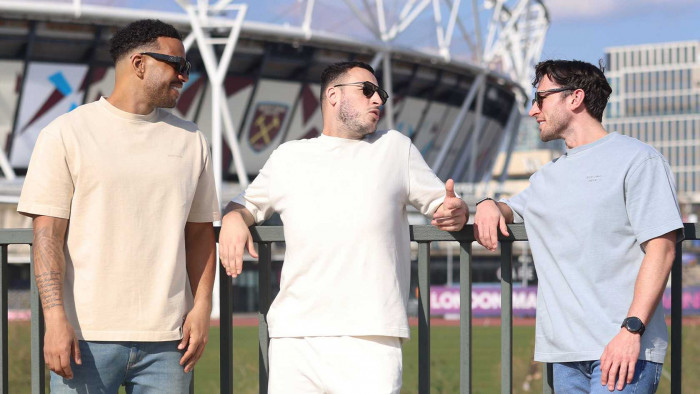We got three artists to produce original works of famous World Cup moments
The beautiful game indeed


Sure, Rembrandt could paint flesh that looked real enough to touch, but could he curl a free-kick into the top-right corner from 35 yards? No, he couldn’t.
But when Raheem Sterling shimmies around Tunisian defenders (fingers crossed) like the swirls in Van Gogh’s ‘The Starry Night’ (1889), or Paulo Dybala arrows in a mid-sprint pile-driver from near the corner flag (TBC) employing some Leonardo da Vinci-esque geometry, shouldn’t they be considered artists too?
I’m not thinking here about former Sunderland centre-back Jody Craddock who paints portraits of footballers, or Michael Ballack, now a renowned collector of contemporary art, but about allowing the beautiful game into the Royal Academy or the National Gallery. True, the British Museum has just installed Mo Salah’s boots in the Egyptian galleries, but again this misses the point (at least they asked for these artefacts).
Also, this is not about awarding more Golden Boots or gongs – a Turner Prize to Peter Crouch for services to performance art, perhaps? It is the skill and majesty of the greatest footballers on the pitch that should be admired, not their questionable haircuts or off-field antics.
Take for example, David Platt’s turning volley against Belgium at Italia ’90, a goal that bears comparison to the finest sweeping arabesques in art history (in visual art it refers to a flowing or spiralling line, but in dance parlance it is a statuesque one-legged pose, so also works – think Edgar Degas’ paintings of ballerinas). Or Dennis Bergkamp’s insouciant drag-back and shot from the 1998 quarter-final against Argentina – producing, with three deft touches, all the swagger of Frans Hals’ ‘The Laughing Cavalier’ (1624).
Most footballers are no oil paintings themselves, although using an Old Master face swapper, predictably we find that Ronaldo is paired with a saint, Neymar a swarthy sultan and Harry Kane a bewigged 18th-century gent – so all pretty accurate. Besides which, museums have historically been even more popular than football matches, but hopes of making all stadia and Premier League fixtures free to enter are about as likely as seeing Firmino replacing Michelangelo, Yaya Touré substituting Turner, or John Terry displacing John Constable.
Ossian Ward writes for art and football magazine OOF, available from oofmagazine.com and all major museums/hip magazine shops, £6
The Last Misjudgement of Zidane
Tim Cunliffe (England)
29.5cm x 40cm, Stained glass

The artist says:
I picked the moment Zinedine Zidane headbutted Marco Materazzi during the 2006 World Cup final because it was one of the most dramatic and surprising moments in the tournament’s history. But also, from an artistic perspective, it is a very exciting composition – full of drama and violent energy. Zidane’s head has just smashed Materazzi’s chest and Materazzi is reeling, screaming out loud.
I also liked the idea of capturing such a violent moment in glass, because glass is fragile and delicate.
I used green for the grass, of course, and surrounded the head of Zidane with bright red to represent the red mist descending.
But I also wanted these bright colours to evoke early medieval stained glass. Being a stained-glass artist, I’m very interested in medieval art and this piece is a sort of echo of that style. Even modern football kits echo traditional medieval heraldry – almost always bold, block colours with crests depicting animals or weapons.
The expert says:
The holy headbutt in stained-glass form beautifully renders the religious apogee of the 2006 final when football’s archbishop Zinedine Zidane, upset by a foul-mouthed psalm, lost his cool and flattened his opponent, only for Materazzi to magically be reborn three minutes later.
This luminous work is far less sacrilegious than the statue of the incident, Coup de Tête by Algerian artist Adel Abdessemed, which rubbed French noses in defeat like nothing else imaginable.
The Passion of Tardelli
David Oliveira (Portugal)
55cm x 35cm, Wire sculpture

The artist says:
With this incredibly dynamic moment, just after Marco Tardelli scored in the 1982 World Cup final, I wanted to try to do a sketch, but focusing on the pose and the famous blue shirt, rather than a portrait-style resemblance. I’m not a football fan, so I did a lot of research about that moment.
I love the passion around it, of Tardelli.
This is an expression of pure, uncontrollable joy. This is what I wanted to convey.
I ‘drew’ the piece in the air using wire, then completed using tulle, a light fabric, to ‘paint’ it. I use these materials because I associate them with the plastic characteristics of crayons.
The impression it gives, that all my work gives, is that it seems to move in an immaterial world, like a memory. What a memory Tardelli gave us.
The expert says:
So it’s the famous 1982 Tardelli celebration, almost busting out of his short shorts, except rendered in wireframe and three dimensions. There is some of Diego Giacometti’s angst-ridden spindliness to the form, which reflects the intensity of any hard-wrought Azzurri win (gooooooolazo!).
There is also a clear connection to the metallic men of Antony Gormley, whose bronze sentinels are clearly put into the world to represent man’s inner being and shared humanity, but are also just great big static lumps that get in the way, a bit like a typical Italian defensive set-up.
The Ascension of Maradona
Ricardo Cavolo (Spain)
82.5cm x 100cm, Acrylic on canvas

The artist says:
I love this moment: Diego Maradona’s self-proclaimed ‘hand of God’, where he palmed the ball into the net against England in 1986. My work has a medieval sense that what is happening is always heroic or special or miraculous.
I wanted to present Maradona as those saints in medieval paintings, where the main character is like a hero living a deadly adventure and proving his celestial nature.
The volcanoes are about the passion and the energy around that scene during the match. Everybody was about to explode.
The six eyes of Maradona is a symbol meaning his wisdom and how special he is. The more eyes, the more heroic and wise. The rest of the eyes are the world watching that moment in history. The castle being destroyed by thunder is the English national team being smashed by Maradona’s movement. I think football is art, so it is always an inspiration for art. Football makes me feel special things, just like a painting of Rothko or Goya. When I see Messi running with the ball my heart runs like when I’m in front of a Turner painting.
The expert says:
It’s Maradona with six eyes, carrying a flaming sword of justice, while the rest of the footballing world burns under a lava-fuelled fireball organised by the Illuminati. Sounds like the 2022 World Cup to me, but more importantly, this cover presciently predicts the rise of cheating in the global game, as witnessed by Diego’s unlocking of the key to free goals (I’m looking at you, Thierry).
(Photography: Dennis Pedersen)
Latest
Related Reviews and Shortlists









